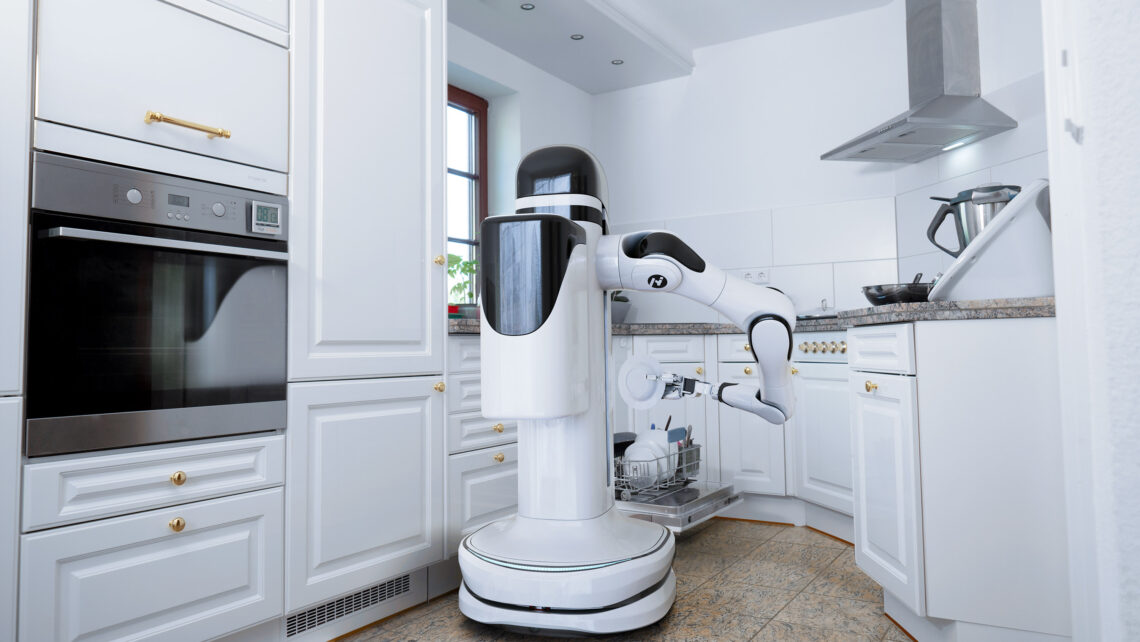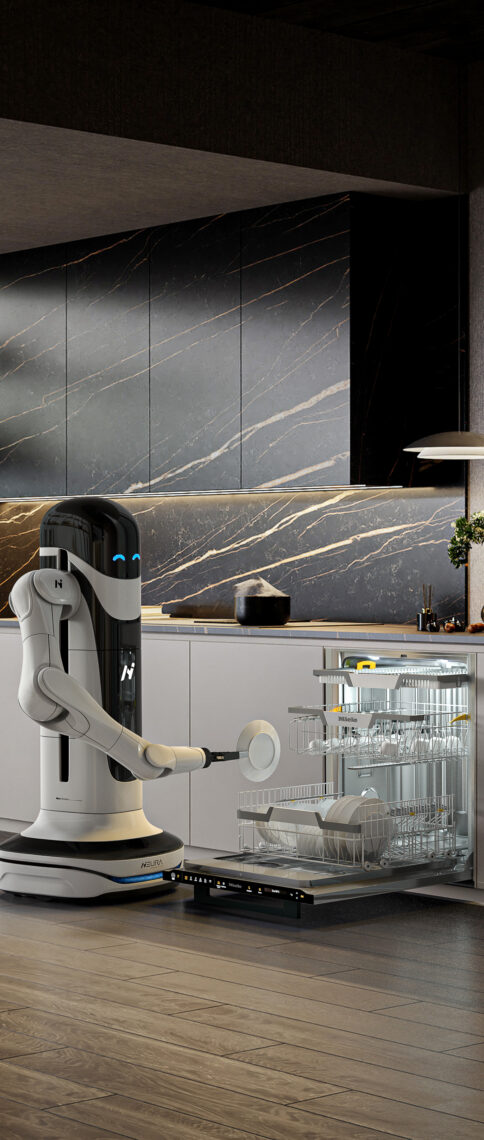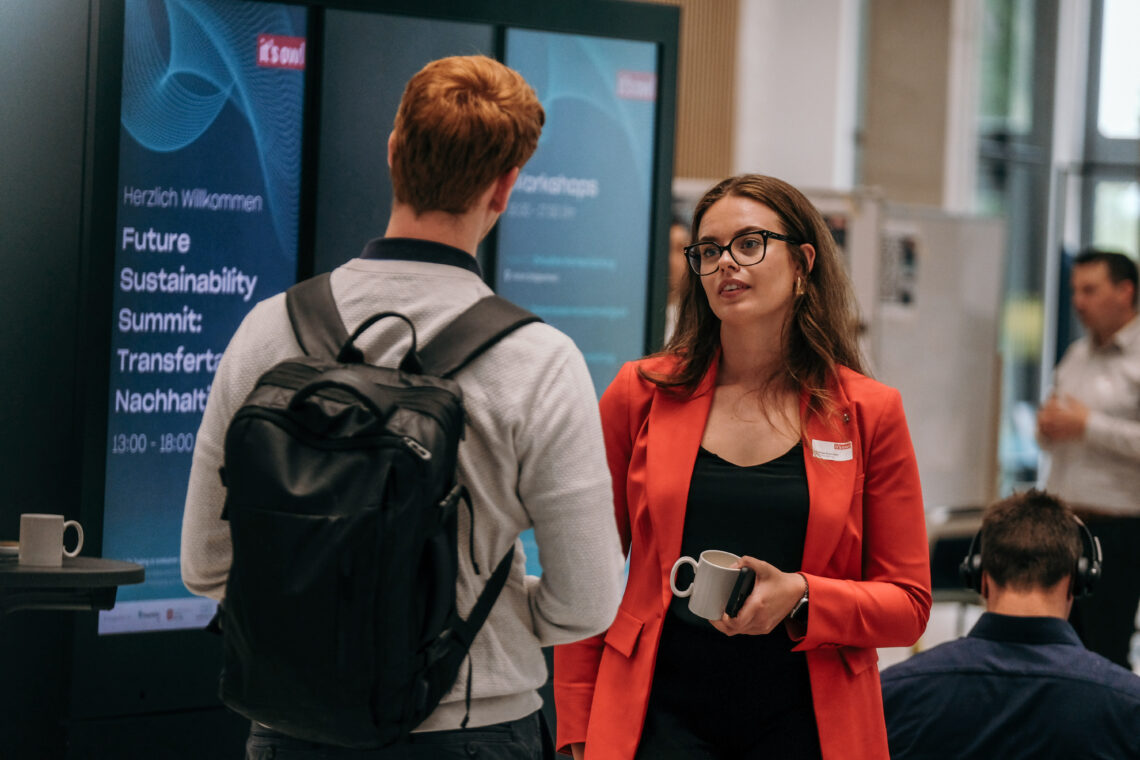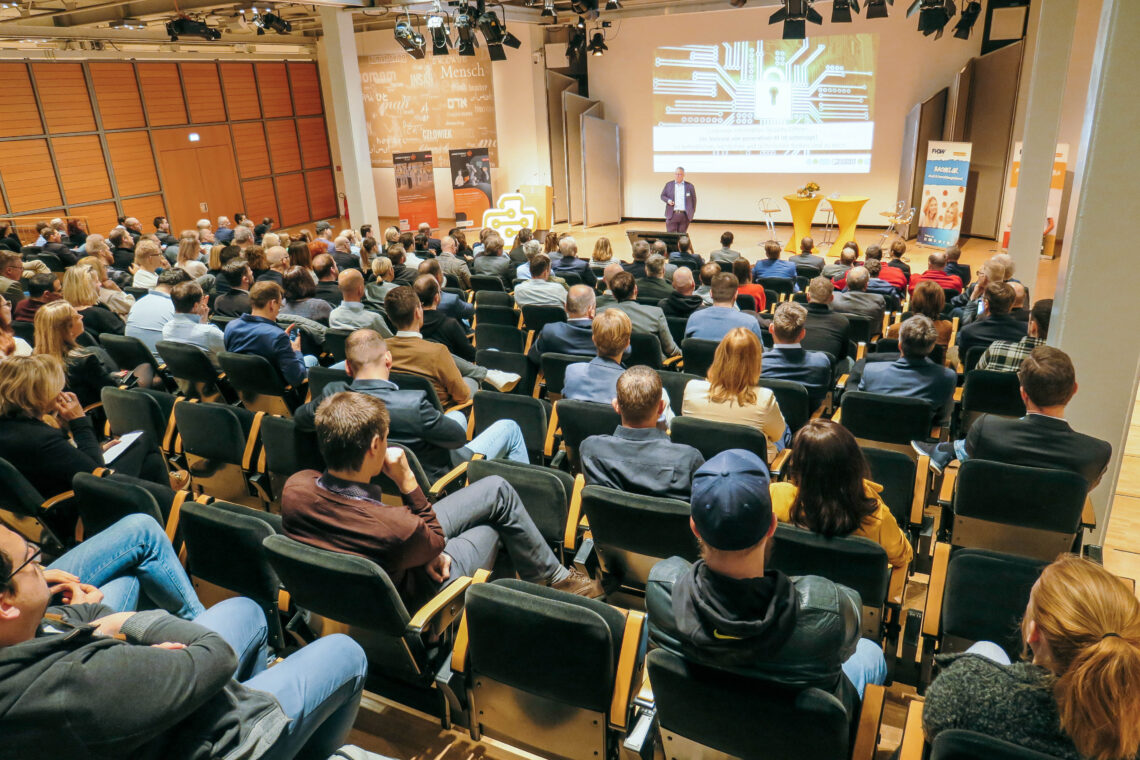
On the way to the perfect dishwasher: Miele is working on a robotic solution
A dishwasher that loads and unloads itself: a vision that is set to become reality thanks to the it’s OWL ‘Hybrid Living’ project. We spoke to Dr. Holger Ernst, Head of Innovation Management at Miele, about how this can work with the help of a household robot, the complex challenges facing the robot and the project team and how a PhD student from Glasgow is dedicating herself to the topic.
Loading and unloading the dishwasher can be a tedious task, what do you think the chances are that a robotic solution for the task will be well received?
Dr. Holger Ernst: “In almost all market research studies in which we ask: ‘What do you as a customer dislike about dishwashers?’, or ‘What should Miele improve in dishwashers?’, the first thing they say is: ‘Miele dishwashers are great, but if they could now also empty themselves – that would be perfect! Customers have a strong desire for ‘seamless comfort’, i.e. smooth and seamless convenience in everyday life. An automatic dishwasher that loads and unloads itself has great market potential. The technical hurdles that exist in detail are an essential part of the ‘Hybrid Living’ project.”
You have been working on the topic of household robotics at Miele for many years. How did it come about that you are now tackling the topic in an it’s OWL project?
Dr. Holger Ernst: “Miele has already had several cooperation projects with CITEC at Bielefeld University in the past. A key finding from one of these projects was that it’s not just about the interaction between the household appliance and the service robot, but that we need to think about the topic on a larger scale. That’s why it’s OWL is the ideal platform for us
to tackle the future topic of service robotics in the kitchen with strong partners from the region.
Dr. Holger Ernst, Head of Innovation Management at Miele
That’s why it’s OWL is the ideal platform for us to tackle the future topic of service robotics in the kitchen with strong partners from the region. As a former Robot Cup world champion, CITEC brings expertise in the field of IT. The start-up Neura Robotics recently founded a research center in Bielefeld and is developing mobile robot platforms. With Hettich, we have been able to gain ‘the hinge to the kitchen furniture industry’ as another strong consortium partner for the project. With us as a kitchen appliance manufacturer, we round off the consortium.”
How does Miele go about developing the robot and what do you need to bear in mind?
Dr. Holger Ernst: “Each consortium partner brings its own focus and expertise to the project. Miele is currently heavily involved in the ‘User expectations’ work package. A PhD student from the University of Glasgow, who is currently doing an industrial internship at Miele, is investigating the complex question of how a domestic robot that provides support in the kitchen should interact with humans. Here is a small example: After breakfast, you give the robot the command: ‘Please clear the breakfast table.’ That sounds simple and clear. But how does the robot know that the delicate flower vase should not be put in the dishwasher, while the visually similar water carafe should be put away? The more you think about the topic, the clearer it becomes how complex it is.”
In contrast to industrial robots, household robots are a relatively new development. Are the requirements of domestic and industrial robots similar?
Dr. Holger Ernst: “No, this project was so important to us because we see serious differences in the requirements for industrial and household robots. In industrial robotics, there are challenges for which there have been established solutions for 20 years. Some of these solutions cannot be transferred to the field of household robotics. The findings from the Hybrid Living project can therefore be transferred to other issues in household robotics and will therefore also be very interesting for other companies.”








